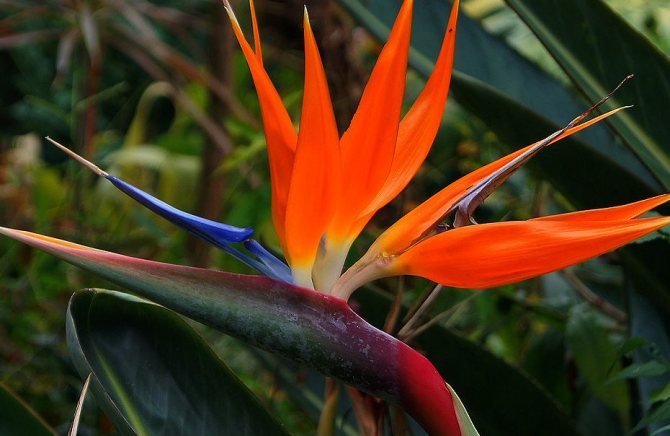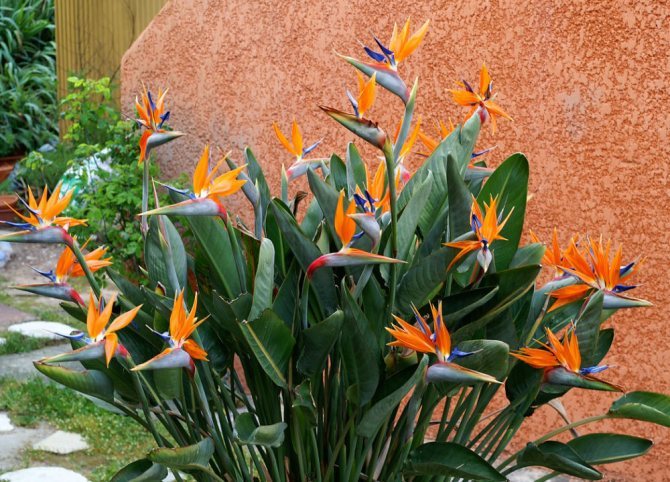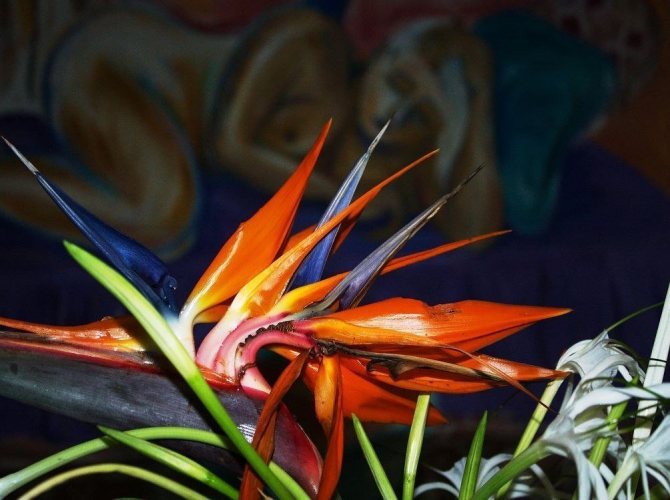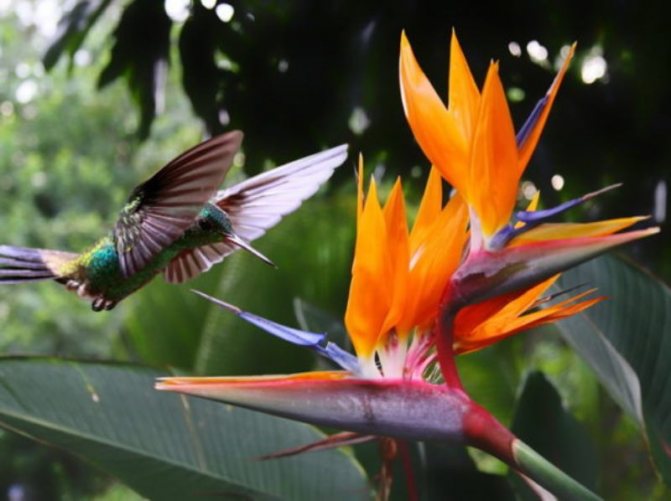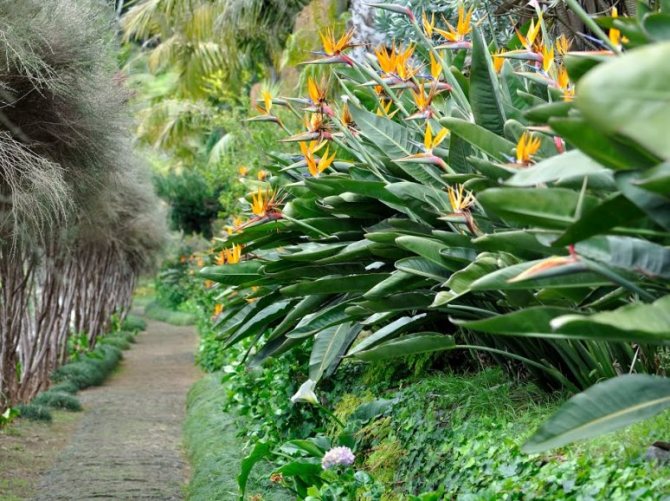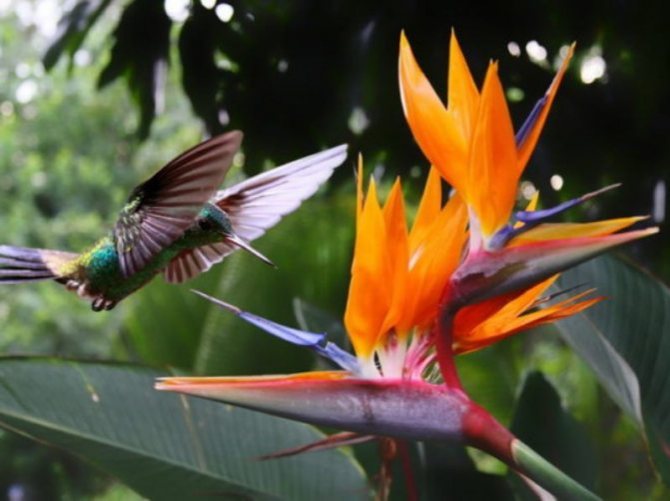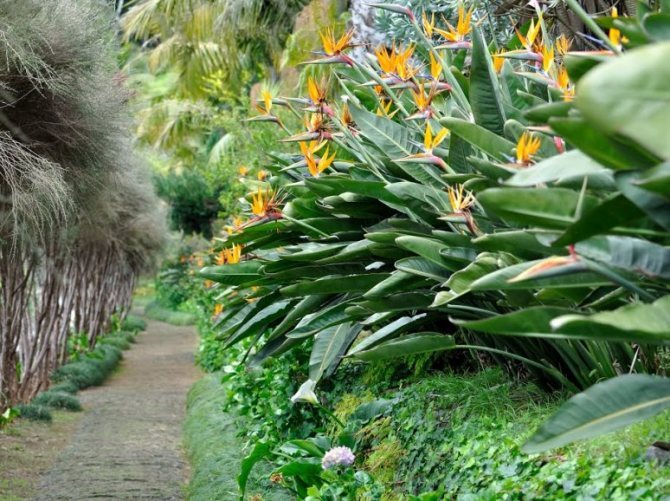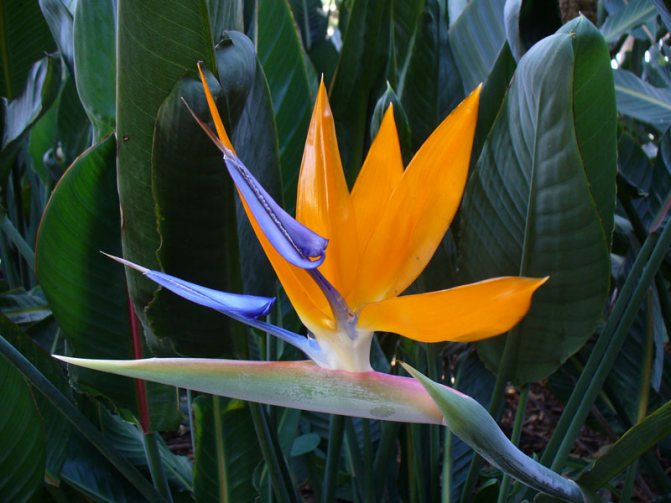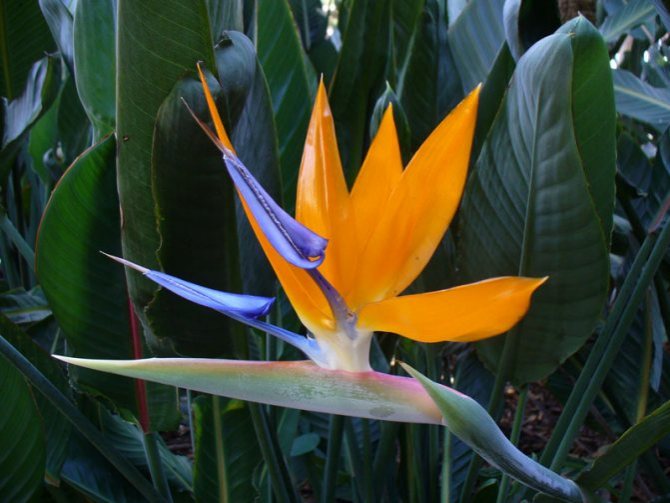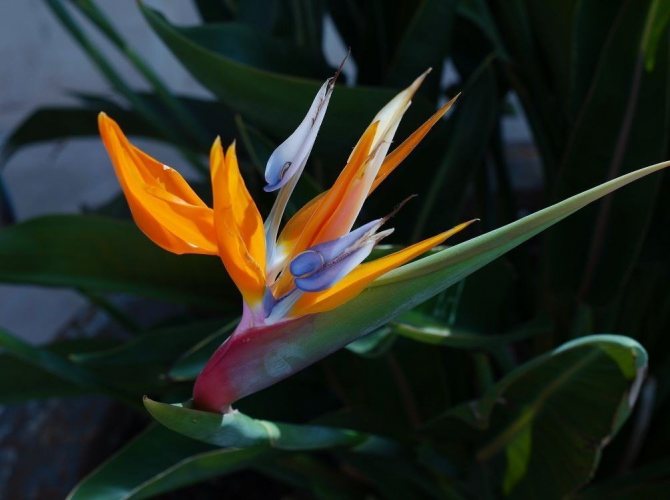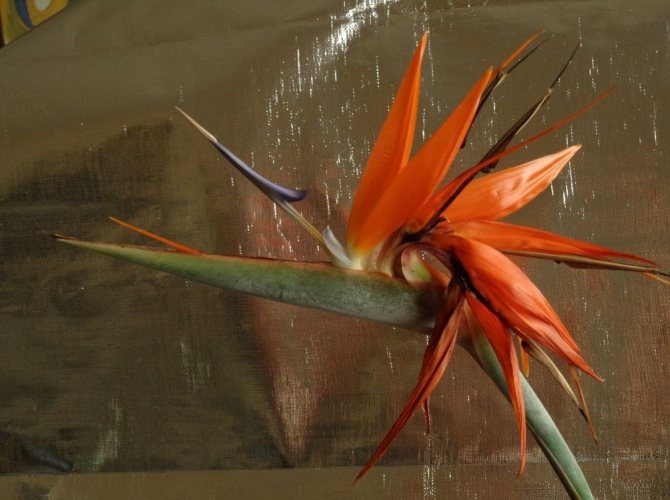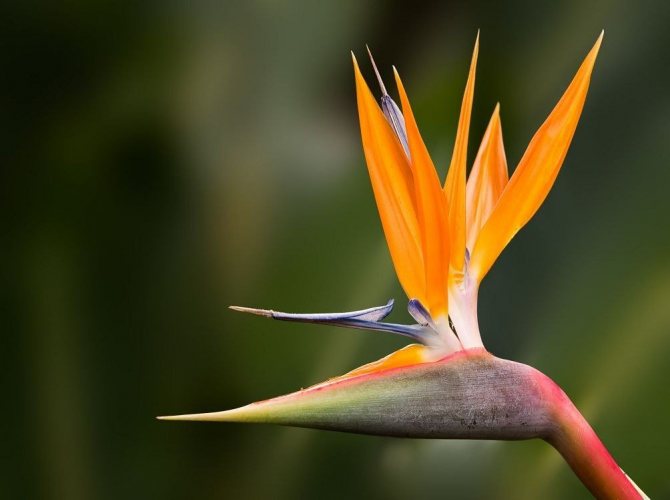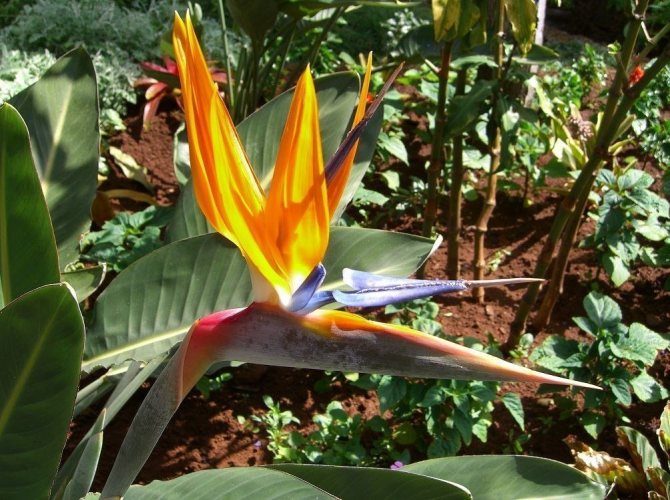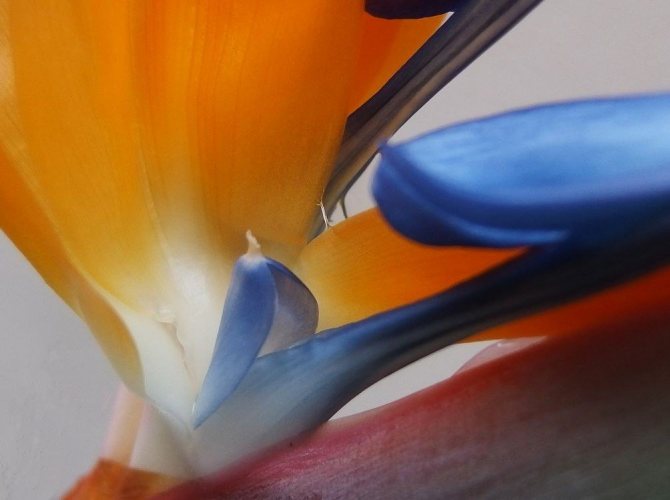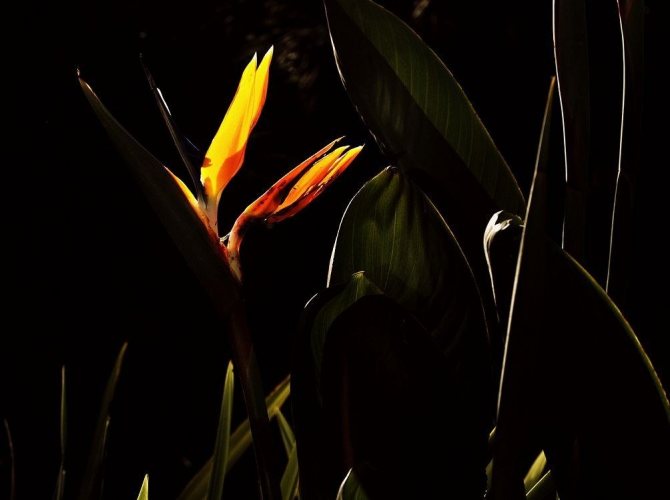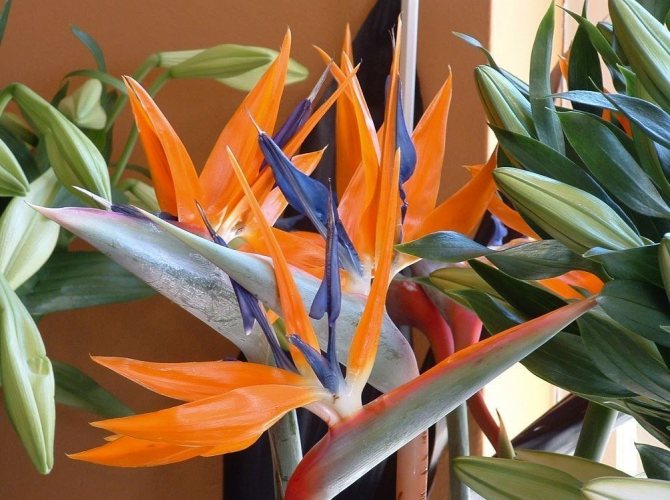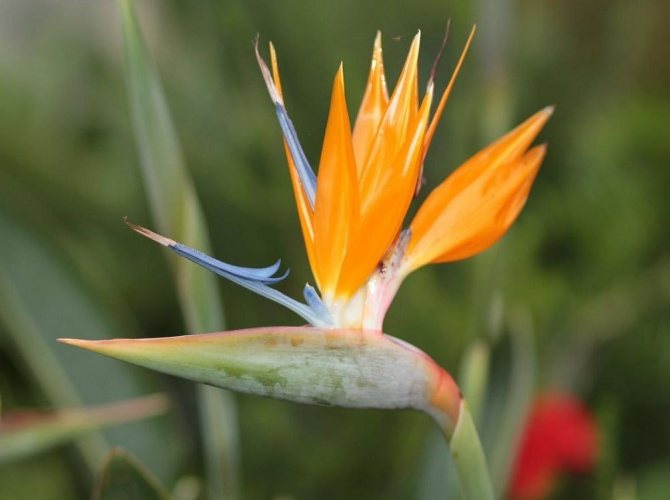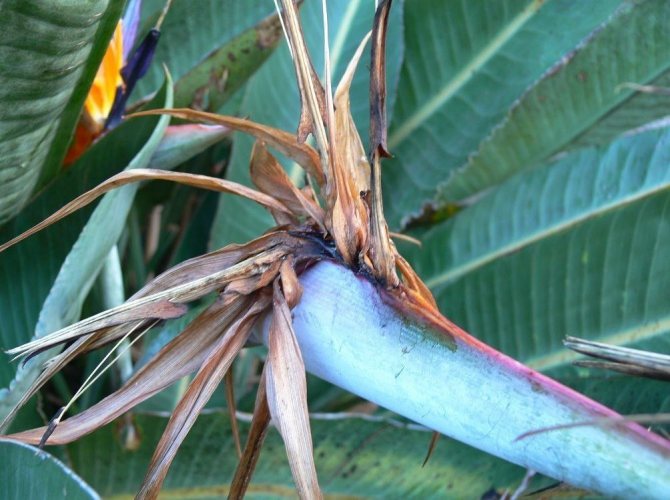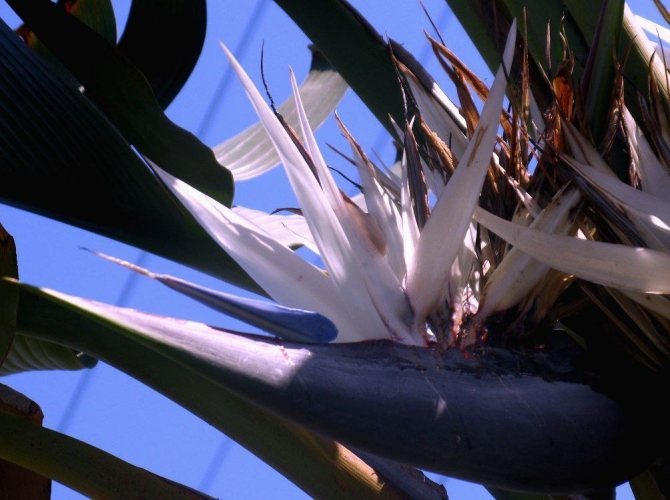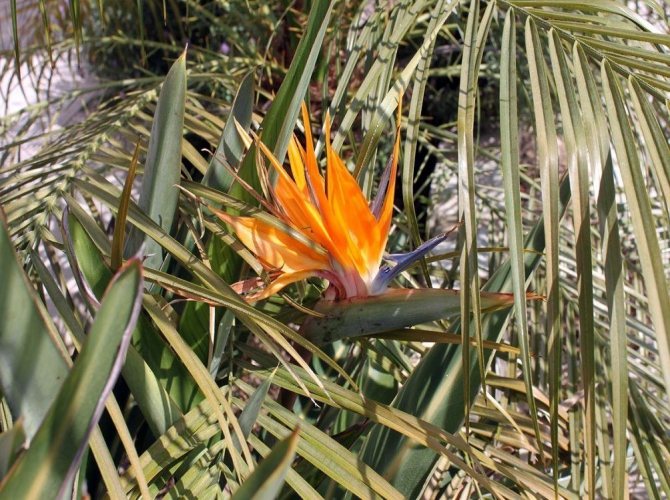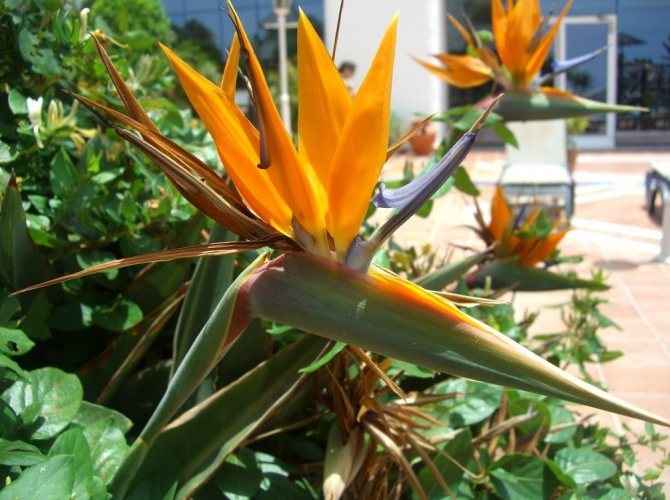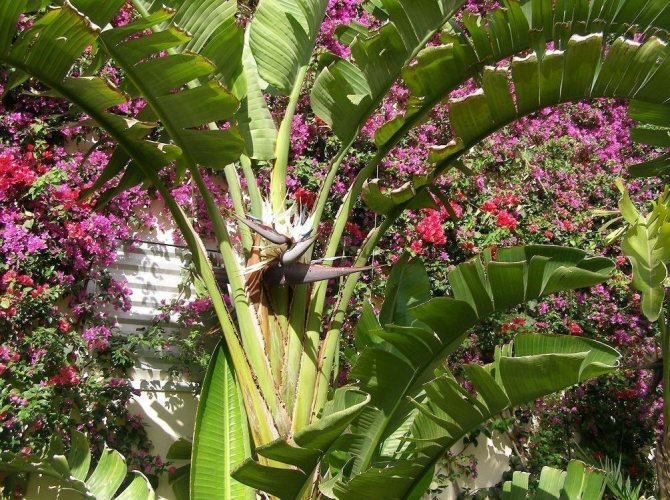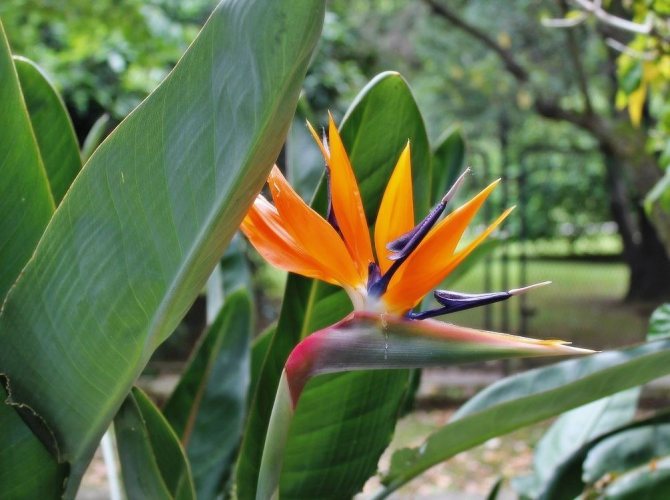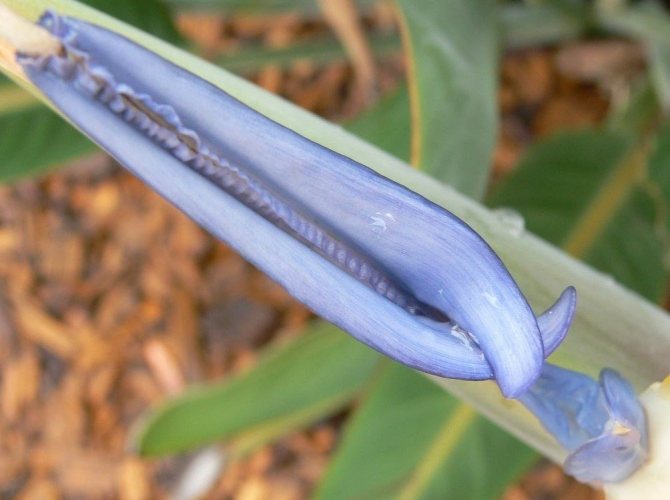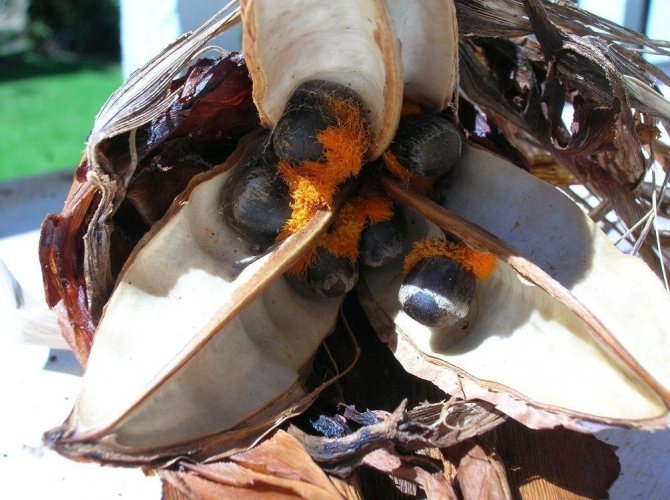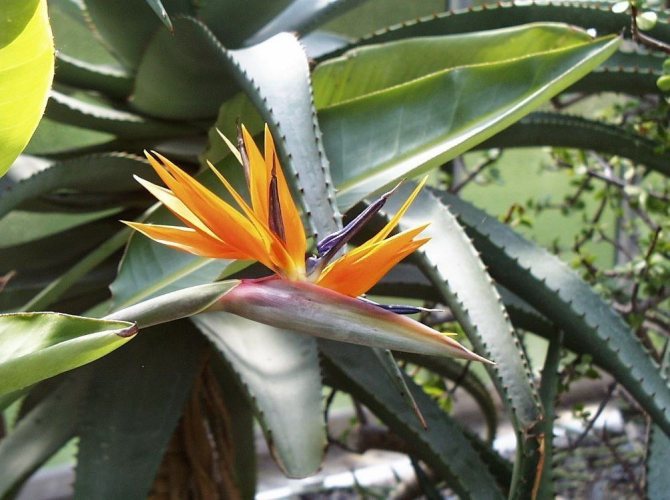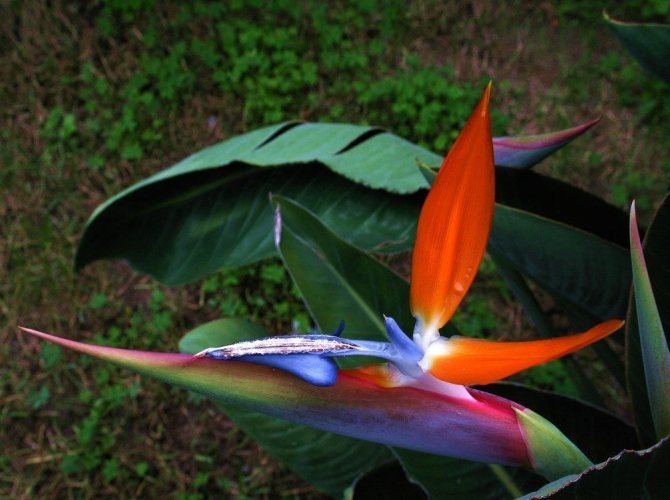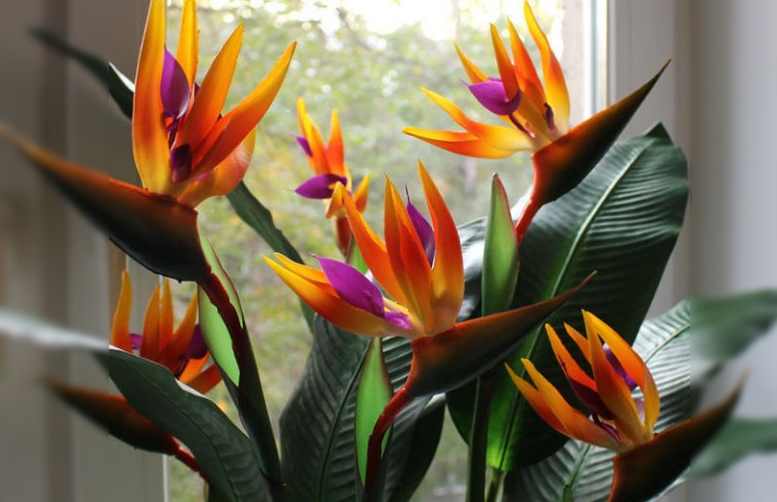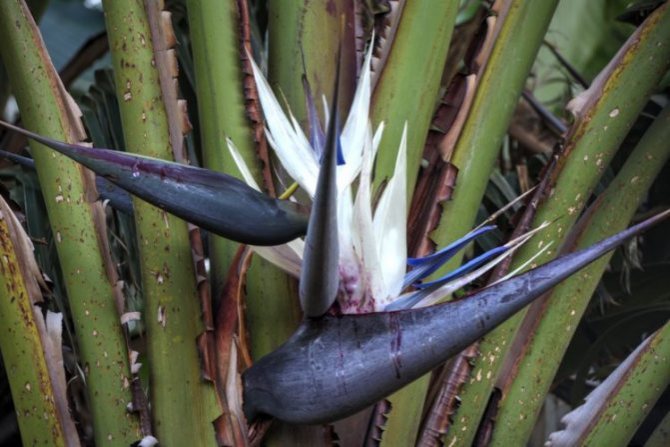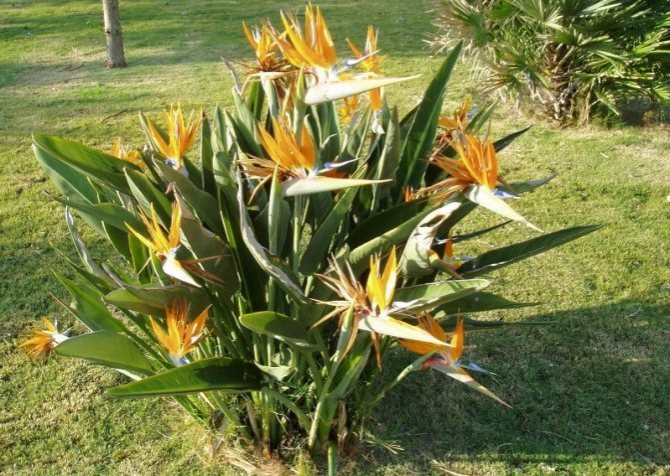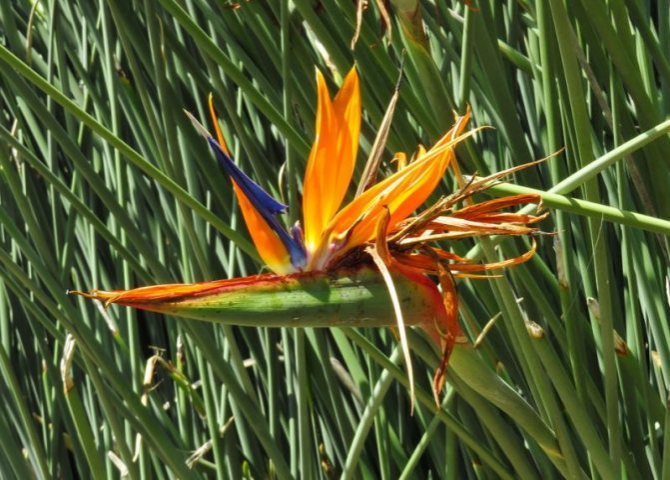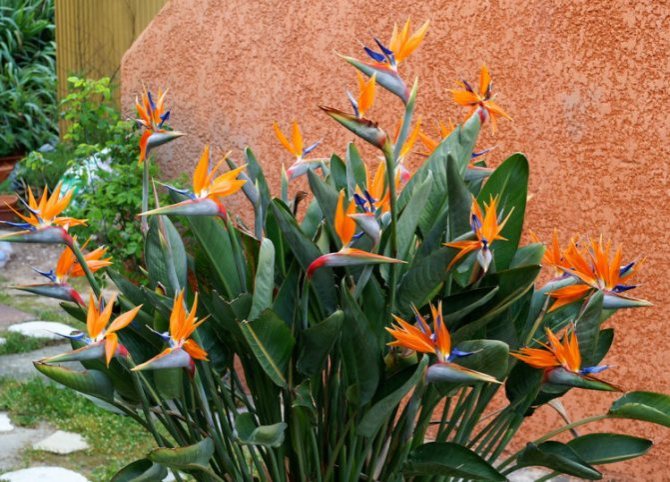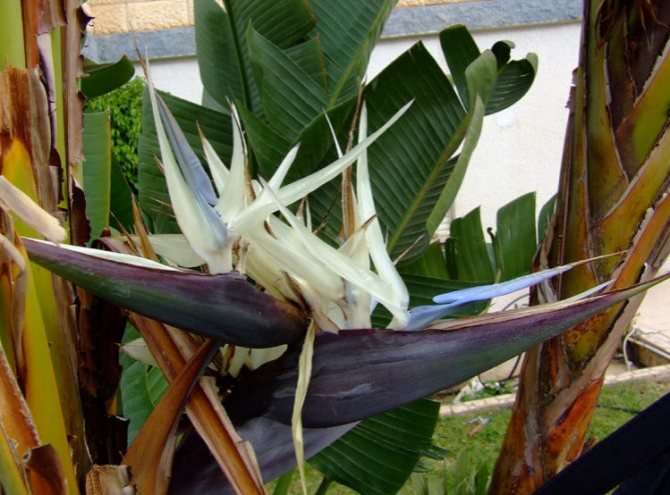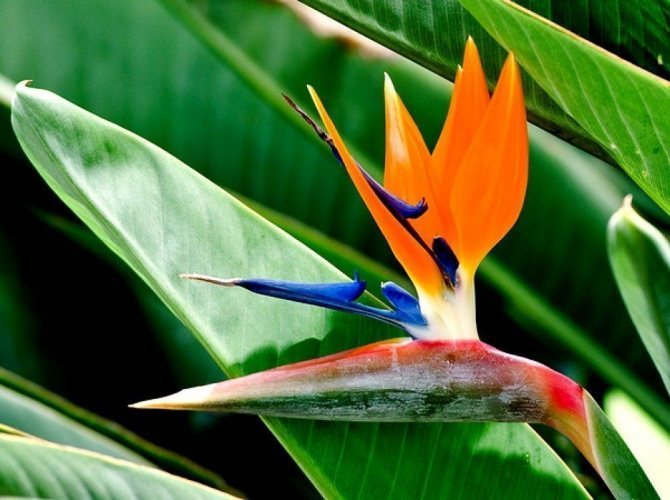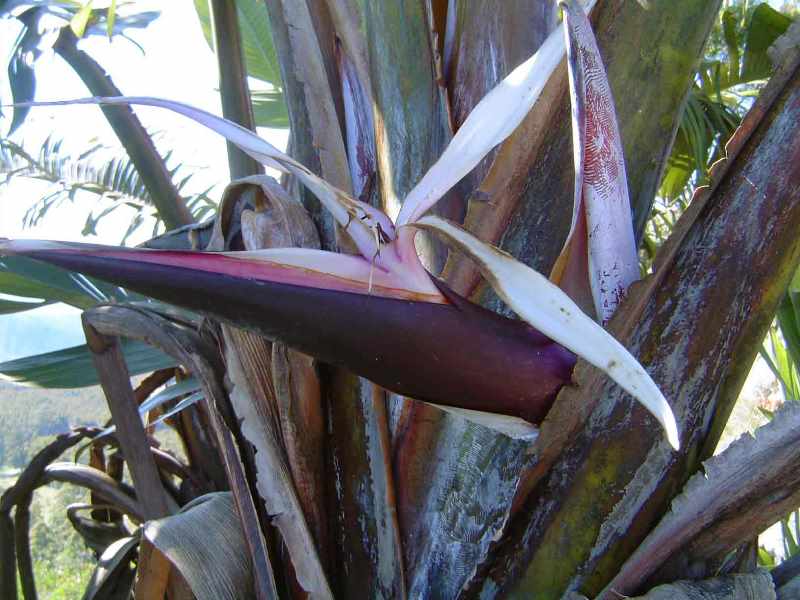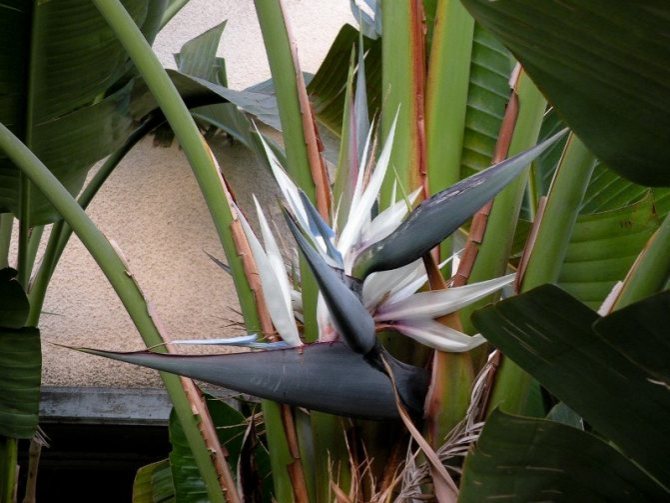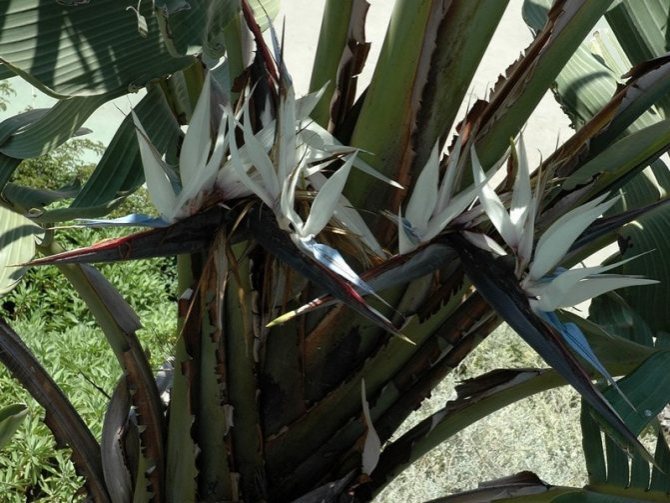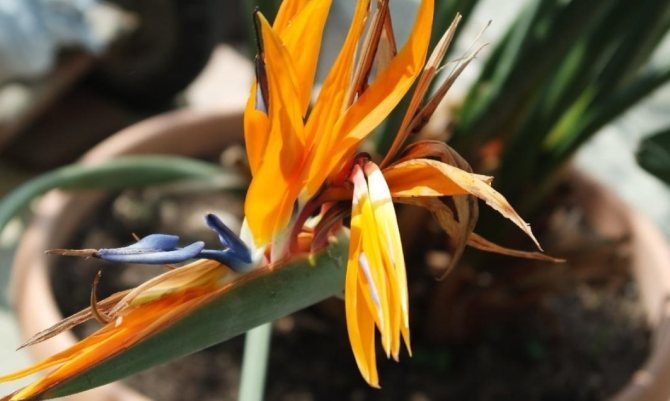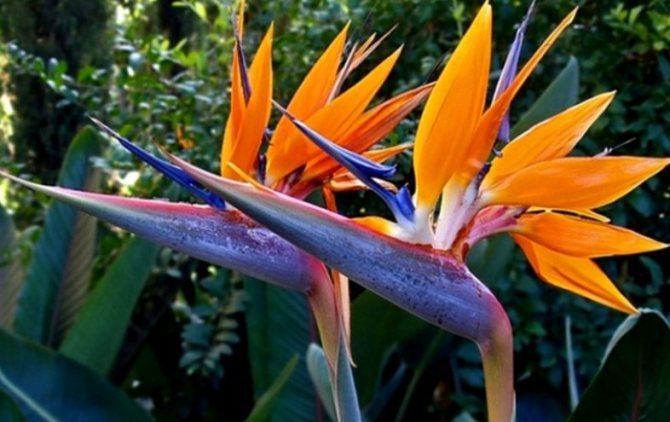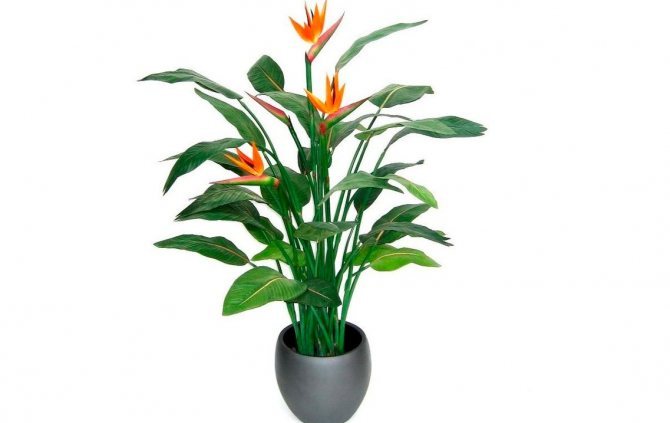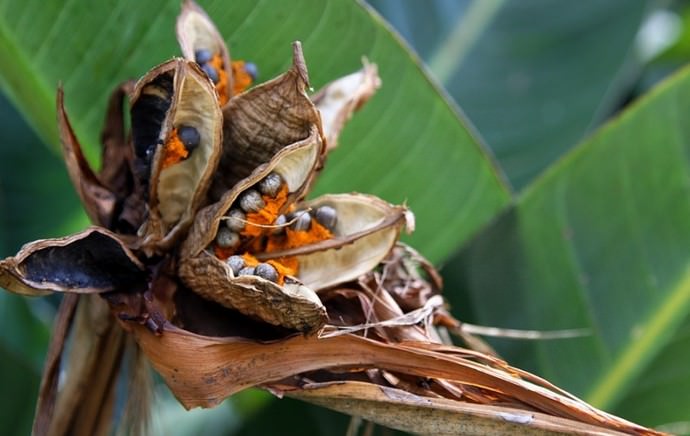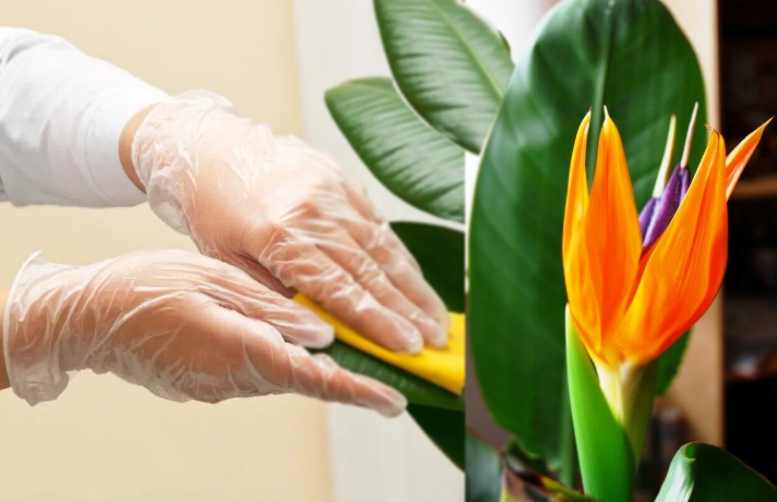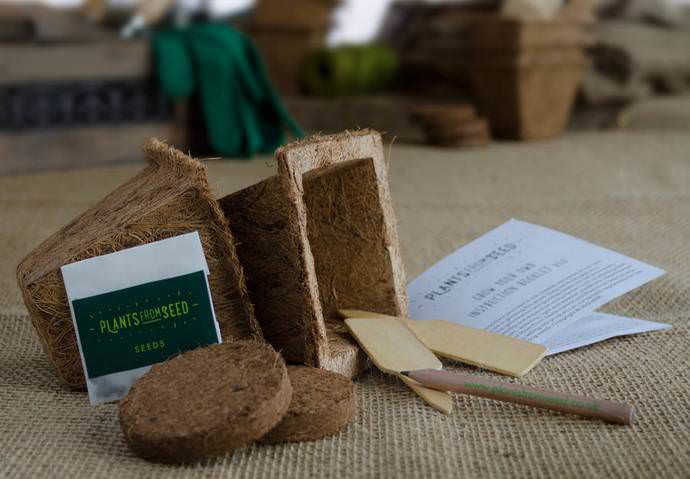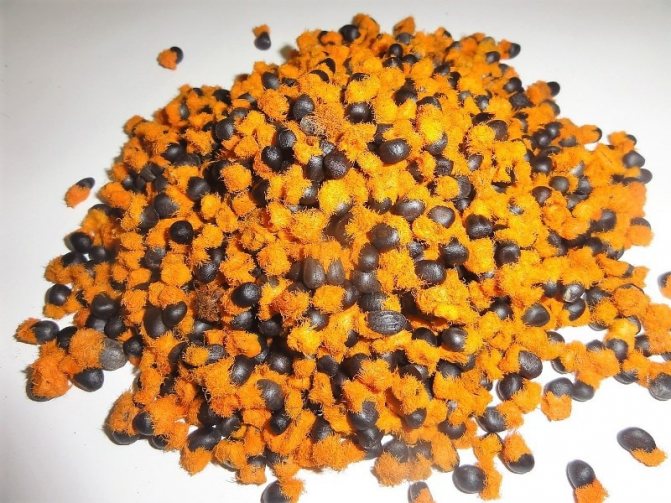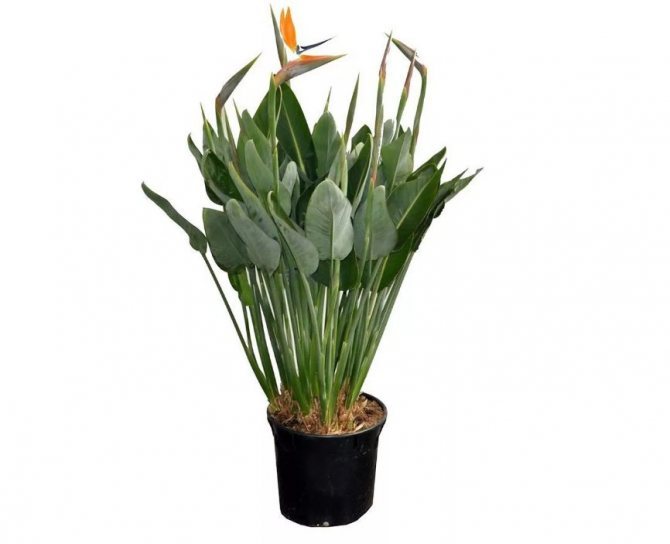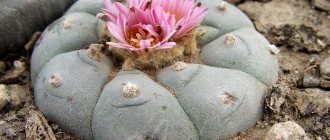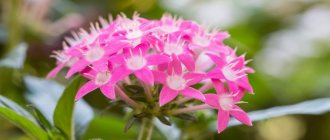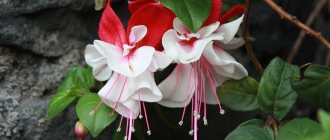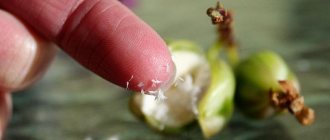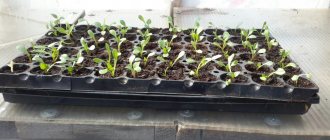Strelitzia (sometimes strelitzia) is a wonderful flower that amazes with the unusual shape of its flower, reminiscent of a fabulous bird. And there is nothing surprising that the people christened this plant - "Bird of Paradise"
There are very few species of this plant in wildlife. There are four types of this wonderful flower in total. In a room culture, only two of them are grown at all - Strelitzia "Nikolai" and Strelitzia "Royal". Remarkably, both of these species got their name in honor of the monarchs. The first is named after the Russian Emperor Nicholas the First, and the second, like the entire family of Strelitzievs, is in honor of the wife of the British King George III Charlotte - Sophia Mecklenburg - Strelitz.
Strelitzia came to us from South Africa, where it sometimes grows to gigantic proportions. There are plants reaching a height of 10 meters. At home, its size is much more modest, but still, it is a rather tall indoor flower. It is also remarkable that strelitzia blooms, not only beautifully, but also for a long time, and even several times a year.
Botanical description
Strelitzia is a small genus of herbaceous perennials. Although indoor specimens rarely exceed 80 cm in height, wild strelitzia are truly gigantic in size. They grow 2-10 m in height and 1-2 m in width. The core rhizome goes deep into the soil. Oval or ovoid leaves with a pointed end have a dense leathery surface of dark green color. A lighter central or embossed lateral veins stand out on the leaf plate. Each leaf 0.3-2 m long and 0.1-0.8 m wide has a dense petiole. Its length ranges from 50-90 cm.
Every year and even several times a year, most often in spring and summer, strelitzia blooms. On the erect, strong peduncle, flowers bloom in turn, which look like an unusual crested bird. In total, there are up to seven buds on one plant. Each corolla is 10-20 cm long and consists of 6 elements: three vertical stipules and three softer petals. Orange-yellow, blue, blue and purple shades are mixed in one flower. The inflorescence lasts up to one and a half months. A cut bouquet of strelitzia will stay in a vase for about two weeks. Flowers are pollinated by tiny birds, therefore, it is almost impossible to achieve the formation of fruits in culture.
Types of strelitzia
There are only 5 species in the strelitzia genus, and the last one was opened only in 2020.
Royal Strelitzia. This plant is especially popular with flower growers. In the humid foothills of South Africa, the variety grows up to 2 m in height. The oblong foliage with a wavy gray-green surface is about 45 cm long. The leaves gather in numerous rosettes and grow on petioles 70-90 cm long. On the reverse side, pinkish stripes are located along the central and lateral veins. The flower consists of orange outer petals and blue-violet inner petals. The flower size is 15 cm.
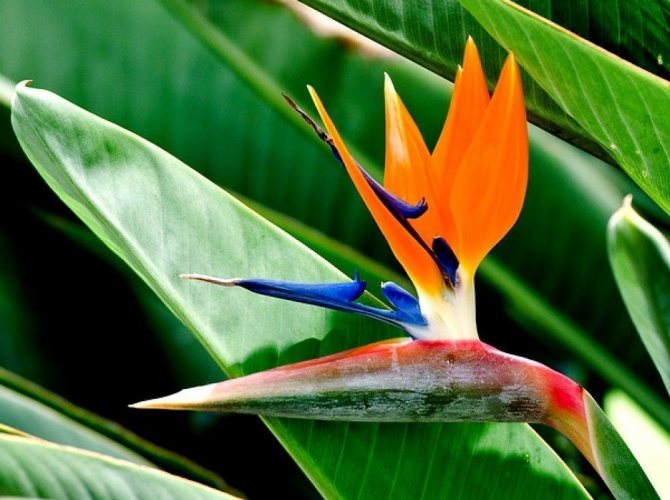
Royal Strelitzia
Mountain strelitzia. The flower is found in desert mountainous areas. The plant takes on a tree-like shape and grows up to 10 m in height. Giant oblong leaves are located around the powerful stem in 2 rows. The huge flowers resemble a boat with a white sail. Their length is about 45 cm.
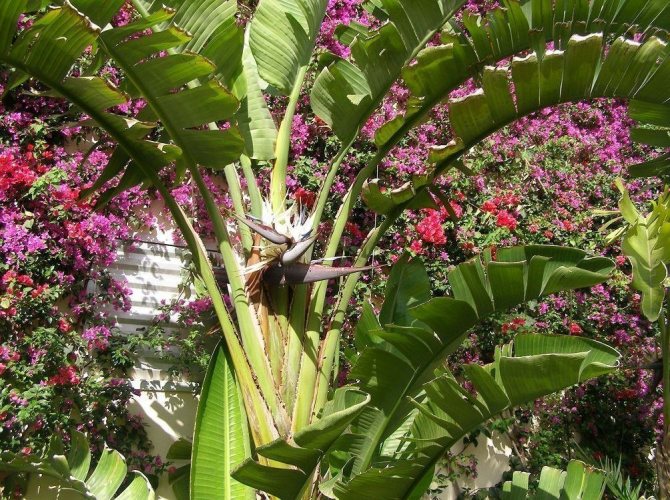

Mountain strelitzia
Strelitzia Nicholas. The plant prefers mountainous terrain. It grows up to 3 m in height. Oval dense leaves resemble banana bushes. The plant gradually forms a stem similar to the trunk of a palm tree. The axillary peduncle is decorated with large flowers. Corolla length averages 17 cm. It contains beak-shaped red-green bracts, under which white outer and inner bright blue petals are hidden.
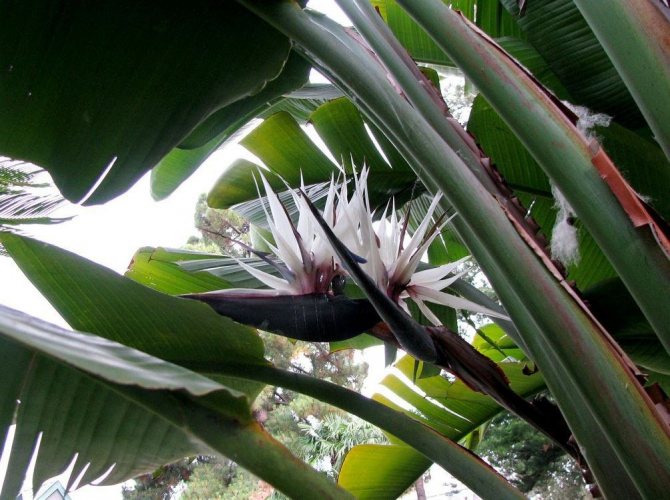

Strelitzia Nicholas
Strelitzia reed. Cold-resistant and drought-resistant plant is found in the south of South Africa. It has large thorny leaves of a gray-green color and bright orange-blue flowers. The diameter of the leaf rosette is 1.5-2 m.
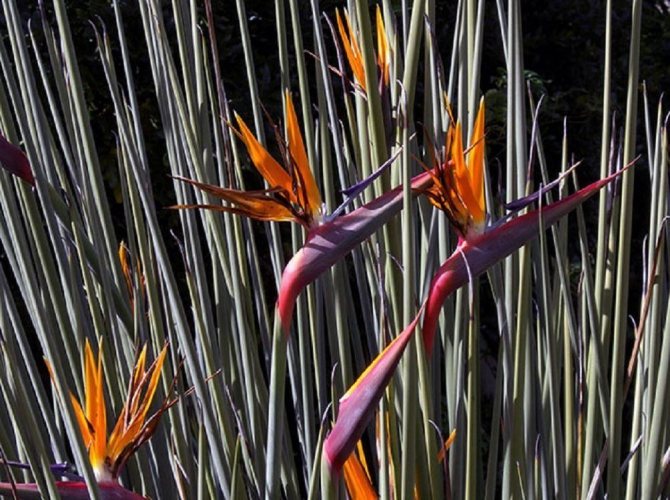

Strelitzia reed
Strelitzia white (Augusta). The lower part of the stem gradually lignifies, it is covered under a dense leaf rosette. Glossy light green leaves can grow up to 1 m in length. Some of them are heart-shaped. The axillary inflorescence is located on the peduncle. Under the purple bracts are snow-white petals.
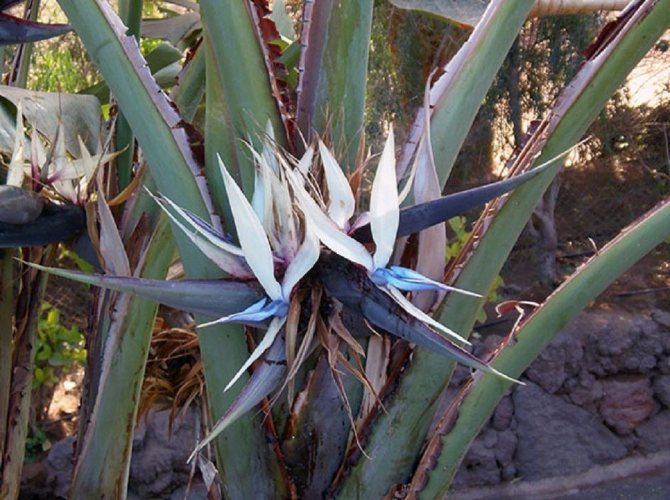

Strelitzia white (Augusta)
Strelitzia nicolai
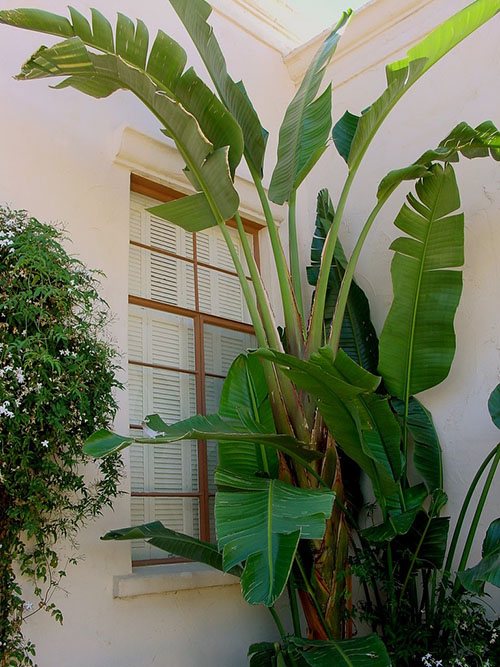

Strelitzia can rightfully be called a royal flower. Not only did the entire genus and the first of the species receive the name of the British Queen, another variety of the flower began to be named in honor of Grand Duke Nikolai Nikolaevich, who was fascinated by the flora and supervised the St. Petersburg Botanical Garden.
As follows from the description, this type of strelitzia can rightfully be attributed to the largest greenhouse plants. Therefore, it is not surprising that birds are pollinators in nature, and in a potted culture, the flower has to be manually pollinated.
The plants growing up to 10 meters in height resemble a banana in appearance, which influenced the appearance of the popular name Strelitzia. Long wild banana leaves on powerful stalks are actively used by the population for the manufacture of hedges, ropes, and roofing.
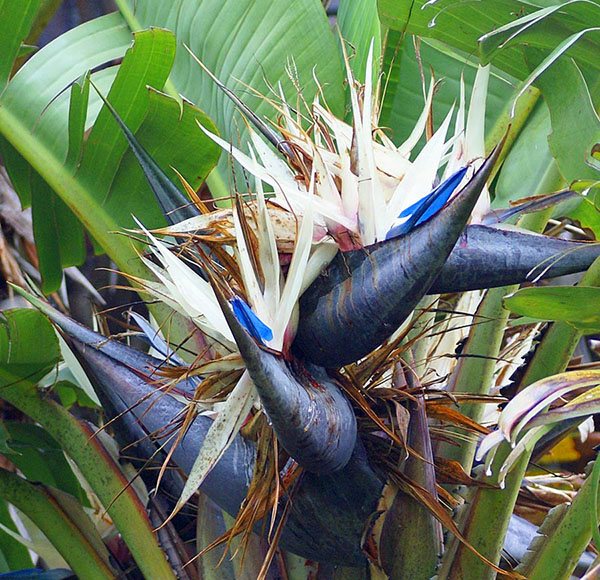

In spring, the trunks, more like palm trees, are decorated with white-blue inflorescences in purple, greenish-red, rigid stipules.
Breeding features
Strelitzia propagates by seeds and rhizome division. The seeds of the plant quickly lose their germination, so it is best to sow freshly harvested seeds. Since the fruiting of indoor strelitzia is rare, when buying, you need to pay attention to the marking. Before planting, the seeds are soaked in warm water (35-40 ° C) for a day. Then the boxes are prepared with soil (sand, peat, compost). The soil is scalded with boiling water, and then the seeds are pressed into it. You do not need to sprinkle them on top with earth. The containers are placed in a place with diffused light and an air temperature of + 20 ... + 24 ° C. The box is covered with glass, which is not removed until shoots appear. The first shoots appear within 1.5-6 months. The shelter is removed gradually, starting from half an hour a day. Seedlings are sprayed with boiled water as the surface of the earth dries. Grown plants are carefully transplanted. It is important not to damage the long but fragile root.
A plant over 5 years old can be split. The procedure is carried out at the end of flowering. When transplanting, the rhizome is carefully freed from the soil and divided into parts or the lateral processes are separated. Each division must contain a root segment and at least one shoot.
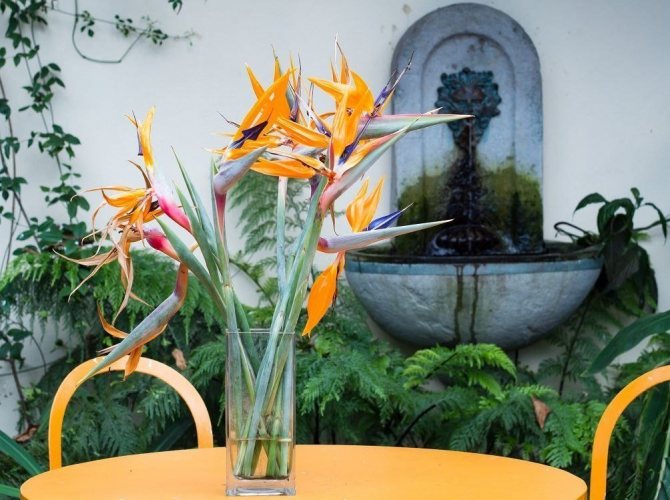

Flower transplant
Soil preparation
Young plants need to be transplanted into other containers every year, since the roots grow deeper and they need more space. This is also done in order to speed up the development process. When the “flower of paradise” grows up to 3 years old, they stop doing such a frequent transplant.
Grown individuals are transplanted every four years.... Because the root system is very fragile and can easily break and the plant can therefore become sick. In the best case, you will have to wait a long time for flowering, but the consequences can be much worse.
If the plant has damaged areas, then they should be sprinkled with activated carbon, ground to a powder consistency.
A slightly acidic soil, closer to neutral, is perfect for the plant. Before replanting, it is better to mix the nutrient components into the soil in advance. It should include river sand, peat and humus, always in equal parts.
Pot selection
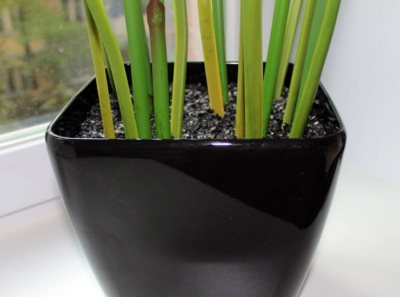

For strelitzia, tall pots, narrowed to the bottom, are best suited. At the bottom, you need to put a layer of expanded clay for drainage (approximately 5 cm), then nutrient soil, and then carefully plant the plant. If the flower has problems with the roots, then in this case the dead roots are first cut off and only after that they are transplanted.
You need to choose a pot depending on the growth of the plant.... If you want to transplant a very small plant, then the size of the product is not required so large for this. But if the individual is already an adult, then a large floor pot is required for the plant to be comfortable in it.
Care rules
Caring for strelitzia at home is simple. Although the flower is called royal, it has to grow in not very favorable conditions.
Lighting. Strelitzia loves bright light. She is exposed to the south or east window. In summer, indoor specimens are shaded from the midday sun or exposed to fresh air. Plants need protection from drafts.
Temperature. Strelitzia prefers cool content. In summer, she feels good at + 22 ... + 27 ° C, but in winter it is necessary to move her to a room with an air temperature of + 14 ... + 15 ° C. Colds below + 12 ° C are detrimental to the plant. By exposing the flower to the open air, you can provide the daily temperature fluctuations that are so necessary for strelitz.
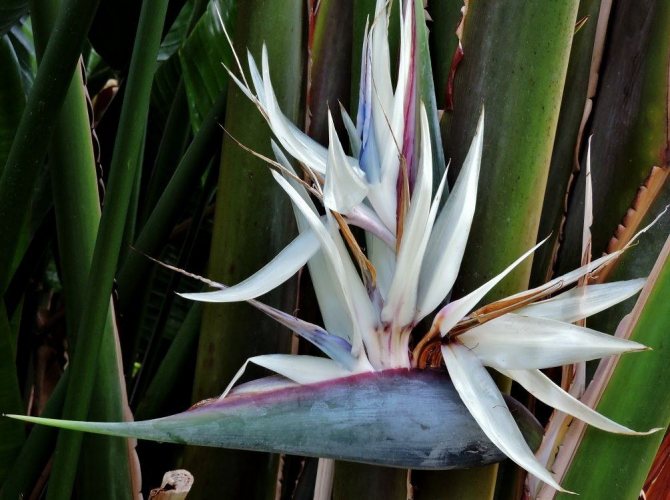

Humidity. Normal room humidity for strelitzia is tolerated normally. It is recommended to spray the crown from time to time. Especially if the tips of the leaves begin to dry out. In spring and summer, the flower is bathed from dust under a warm shower.
Watering. In spring and summer, strelitzia needs abundant watering. It is advisable to take water boiled or well purified. In winter, watering is reduced, but the soil should dry out only 1 cm from the surface. To prevent water stagnation, the sump is emptied after watering.
Fertilizer. Fertilize strelitzia in spring and summer. Mineral dressing for flowering plants is added to the soil twice a week. It is recommended to use organic formulations several times a year.
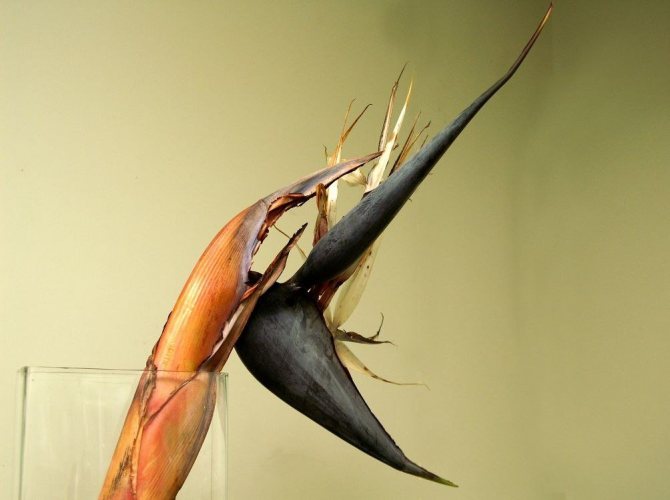

Transfer. Strelitzia is transplanted every 1-3 years. The procedure is carried out in the spring. The flower prefers spacious flowerpots and tubs. In a tight container, flowering rarely occurs. The pot should be deep, but not very wide. A large drainage layer is located at the bottom. The soil for the plant should contain sand, leaf and sod soil, as well as humus.
Diseases and pests. The plant has excellent resistance to flower diseases. Only with constant dampness and stagnation of water in the pot does it begin to suffer from fungal diseases. Spider mites, scale insects and mealybugs settle on the crown in hot, dry weather. Spraying foliage with plain water is a good prevention against parasites. If the insects have already started, the plant is washed under a warm shower and treated with insecticides.
How to achieve flowering
Strelitzia over 5-6 years old blooms regularly, even several times per season. To be sure to see the flowers of the bird of paradise, you need to plant the plant in a spacious pot and provide a cool dormant period. For 2-3 weeks, the plant is kept at a temperature of + 12 ... + 14 ° C, and then brought into the heat. After 3-5 months, the first flowers will appear. Cooling can be ensured not only in winter. If you find a cool place in the summer, then Strelitzia will bloom flowers for the New Year. Also, bright lighting and regular watering are important for flowering.
Post Views: 2
Diseases and pests
The content of the "Royal Bird" is not a very whimsical plant. Therefore, there are not many possible troubles associated with it.
Attention! Compliance with the rules of care and supervision will allow you to avoid the vast majority of troubles. However, aphids or scale insects can colossally harm the plant, and therefore upset the gardener.
Flowering problems
The flowering period of Strelitzia begins after reaching its 4-5 years. Before that, it should be kept at 20-22 ° C. After that, the content should be corrected. In the period from November to February, the plant goes into a dormant state.
The temperature should be 13-16 0С, and watering is done 1-2 times a month. With the onset of spring, the content must be returned to its usual state. Compliance with this rule is important to keep the plant healthy.
Yellowing of leaves
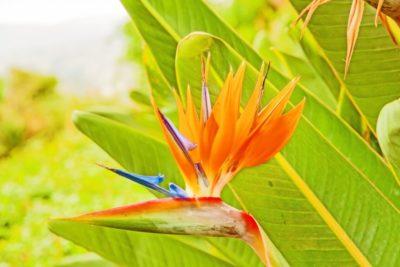

This phenomenon can be observed with a lack of lighting, rotting of the root or low temperature of the content. therefore, when choosing a place for a plant, one should take into account its lighting needs, and also do not forget about maintaining the desired air temperature.
Examine the roots. If it's about them, treat them, but before that, carefully study the necessary information so as not to cause even more damage to the flower.
If the roots are in order, then change the conditions of detention. or consult with specialists who will help solve the problem and give the necessary recommendations and advice.
Drying foliage
It can be caused by an excess or lack of moisture.
Important! If the soil has a characteristic sheen, this is a sign of over-watering. If the ground cracks, then there is not enough liquid.


